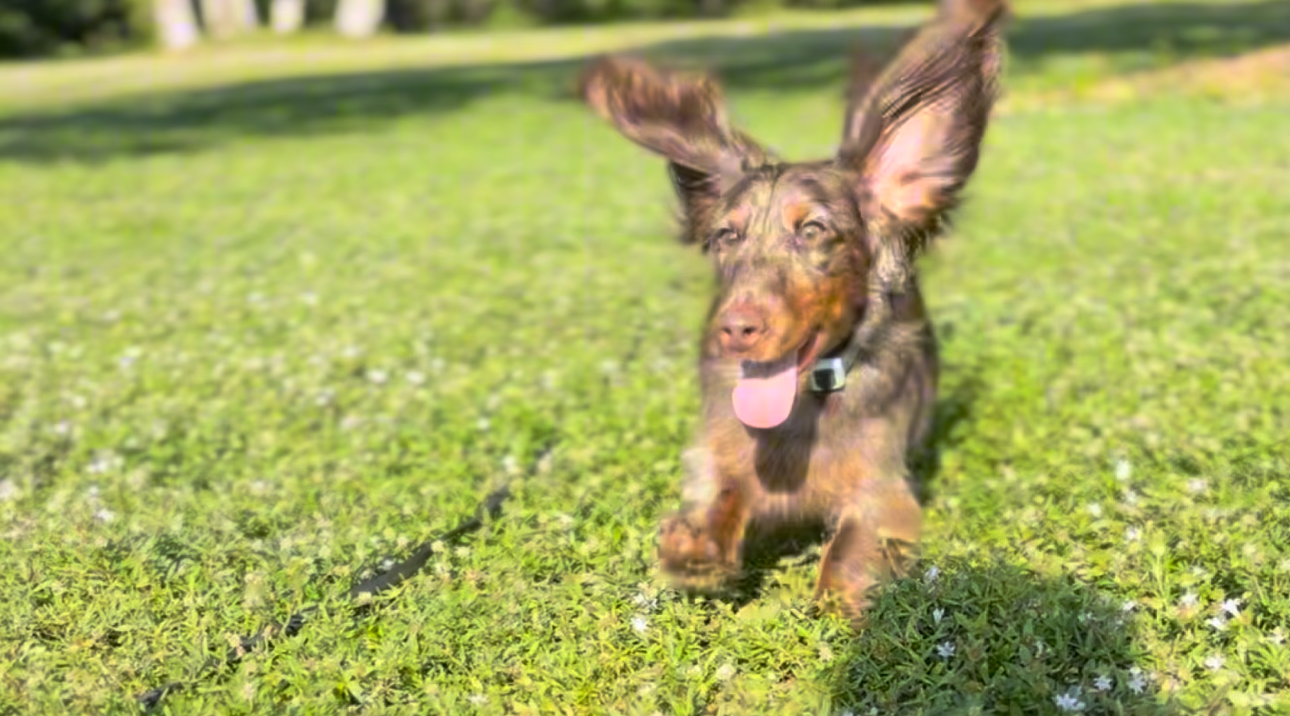Oscar Training Portal

Name: Marley
Dog: Oscar
Breed: dachshund
Current Goal: send videos of sending Oscar to place using "yes, good, and nope".
Long Term Goals : To have clarity communicating with Oscar.
Complete all exercises to become an Elite member
Dog Level - Basic level
Steps to Level-up - Send videos of you practicing the exercises to level-up.
Basic Exercises
Focal Focus -
Loose Leash WalkEngagement - Pay attentionUsing PlaceCrate/HomeUsing touch Pad
Intermediate Exercises
Source Focus -
LuringSpin/TurnPosition Changes (Down, sit, stand)Side Changes (heel, right, middle)
Advance Exercises
Touch Pad - Place Exercises -
One way mirrorLong distance recallLong distance OB (Down, Sit, Stand)
Elite Behaviors
Combos 1a-1eCombos 2a-2dCombos 3a-3d
Engagement
Engagement encompasses a wide range of interactions. Our dog might be captivated by the grass, the sky, another dog, a toy, or even something we hold in our hands. This term can sometimes create confusion in conversations between trainers and dog owners. So, what does engagement truly signify for our canine companions, and how can we effectively practice it?
FOCAL FOCUS 1a
Loose Leash Walk
Benefit: Oscar will learn to consistently follow you, building a strong habit.
Step 1: Reward with Food.
a) Say with me Oscar as you begin walking. Praise him with "good" and reward him when he’s positioned behind your left leg.
b) While Oscar is behind you, say "break" and drop food on the ground to encourage him to explore his surroundings.
c) Repeat step a), gradually increasing the duration before he starts sniffing the floor. Before that happens, return to step b) and say "break."
Establish the habit of distinguishing your verbal cues from your actions. Use the leash to prevent him from moving past your left leg while walking.
Step 2: Continue repeating step 1 as often as needed until he can follow you without pulling.
Focal Focus 1b
Engagement
Benefit: By practicing this exercise, Oscar will learn to pay attention and respond promptly when you call him. If he seems disinterested or doesn’t listen the first time, use this exercise as a reminder to refocus his attention.
Skill Breakdown: Understanding Timing
- Learn to say “yes” and reward him in a way that clearly distinguishes verbal cues from physical actions.
- Improve your timing on when to use “no” or “nope” effectively.
- Understand how to utilize the leash appropriately when giving cues such as “nope,” “no,” “hey,” and “AnAn.”
Focal Focus 1c
Place
Benefit: Teach Oscar to recall from any location, manage his excitement, alleviate separation anxiety, and enhance his impulse control in various environments. Transform any table or chair into a designated spot for him.
Basic Level: Distance & Directions
Step 1: "Yes" Terminal Marker
Begin by fostering engagement. Say "place" and take a single step toward his designated bed. The moment he steps onto the bed, say "yes." Repeat this exercise several times (about five) while progressively stepping back to increase the distance between you and the bed. Your goal should be to have him go to his place while you stand 20 steps away.
Step 2: "Good" Duration
From a distance of 20 steps away from the bed, ask him to go to his place. When he does, say "good," and move toward him to reward him with food.
Intermediate Level: Recall & Position Changes
Focal Focus 1d
Go home
Benefit: Oscar will consistently respond when you instruct him to go to his crate. You’ll be able to direct him home from a distance, effectively using the crate for position changes.
Step 1: Reward with Food and Encourage Engagement
a) Say, “Oscar, go home,” and immediately mark with “yes” as soon as he enters the crate. Take a step back after saying "yes" to gradually increase the distance.
b) Once you've established the desired distance, introduce duration. Repeat step a) while standing 10 steps away from the crate, and say “good” when he is inside the crate.


